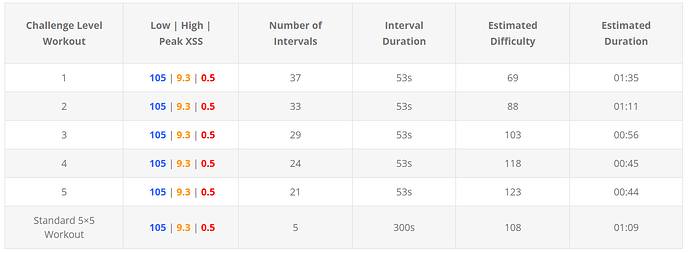Here’s some interesting information we’re adding to the blog post on Magic Buckets that I thought I’d share here for this discussion. In the new data field, we introduce the concept of Challenge Level which show on the data field and range from 0 to 10 - 0 being no fatigue and 10 being a breakthrough. Doing a workout at Challenge Level 5 means you’re doing intervals around midway between no fatigue and a breakthrough for the high intensity power prescribed by the XSS targets. The main point I wanted to share is that, as you do workout with greater fatigue, the faster you accumulate XSS and the less training time you need. In effect, workouts become more efficient and you can reach higher levels of fitness within a given time constrained plan. But if you have time and are not motivated to go really deep, you can do more and spend more time at it. Here we compare doing them at different levels with a typical 5x5 VO2 workout done at 115% of FTP.
